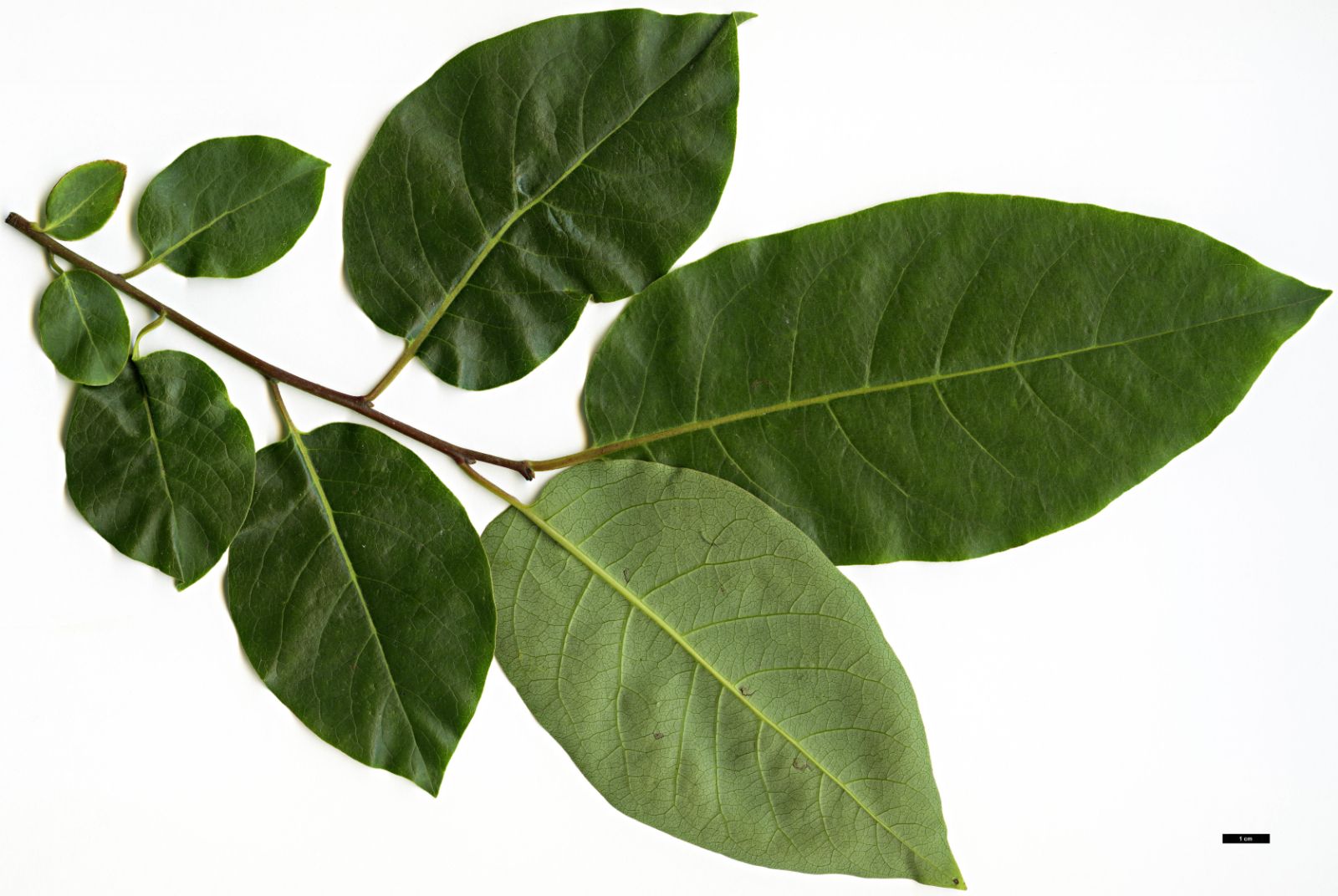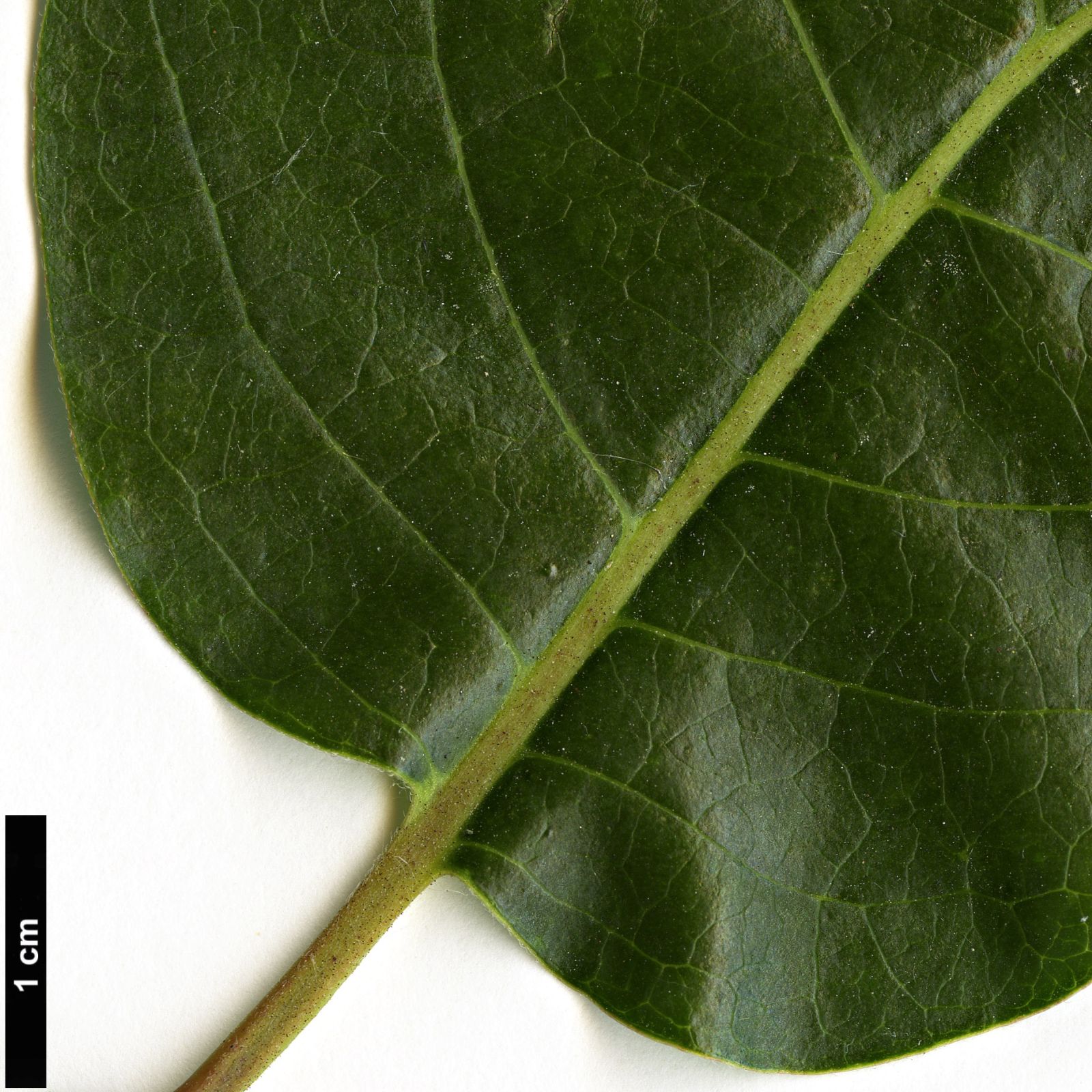Diospyros virginiana
Credits
Article from Bean's Trees and Shrubs Hardy in the British Isles
Recommended citation
'Diospyros virginiana' from the website Trees and Shrubs Online (treesandshrubsonline.
Genus
Common Names
- Persimmon
A deciduous tree 40 to 65 ft high in this country, but occasionally over 100 ft high in the wild, with a trunk 2 ft in diameter; young shoots more or less downy. Leaves oval to ovate, tapering or more or less heart-shaped at the base, pointed at the apex, 11⁄2 to 5 in. long, 3⁄4 to 2 in. wide, glossy green above, pale beneath, glabrous except for a little down on both sides of the midrib; stalk downy, 1⁄3 to 1 in. long. Male flowers produced one to three together in the leaf-axils, on very short downy stalks. Corolla pitcher-shaped, 1⁄3 in. long, with four short recurved lobes. Female flowers solitary, larger, yellowish white. The fruit I have not seen in this country, but it is described as more or less orange-shaped, 1 to 11⁄2 in. across, pale yellow with a red cheek.
Native of the eastern United States as far north as Connecticut, but most abundant in the Southern and Central States, where the fruit is eaten in large quantities. The tree is somewhat tender when very young, but perfectly hardy after a few years. The finest tree in the British Isles was one growing near the Sun Temple at Kew. It was a male tree 65 ft high, with a trunk 5 ft 6 in. in girth. The trunk was singularly picturesque because of the rugged bark, which was deeply cut into square or rectangular blocks. This tree was planted where it stood in 1762, being one of a large collection transferred from the Duke of Argyll’s garden at Whitton to the then newly formed arboretum at Kew. In a young state the persimmon is rather like the date plum, but the leaves are longer-stalked, not of so polished a green, broader and more rounded at the base.
A specimen in the Oxford Botanical Garden measures 55 × 53⁄4 ft (1970).
From the Supplement (Vol. V)
For a note on this species by Stephen Spongberg, see Arnoldia, Vol. 42, pp. 103–21 (1982).
Some examples of D. virginiana are: Kew, pl. 1878, 48 × 31⁄2 ft and, pl. 1894, 33 × 31⁄4 ft (1980); Oxford Botanic Garden, 42 × 6 ft at 4 ft (1983); National Botanic Garden, Glasnevin, Eire, 33 × 4 + 31⁄4 ft (1980).









